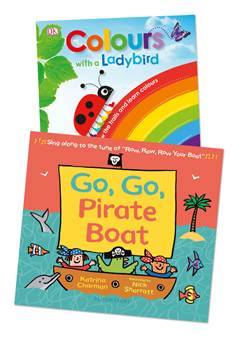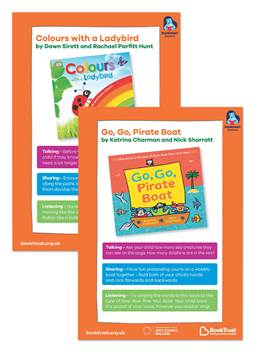Theme 2: Sharing books from an early age
Supporting families to start sharing books with their child.
The benefits of shared reading
Talk with the family about the benefits of reading with their child. Start by asking about the benefits of shared reading they see and build on that. There are many benefits of sharing books and stories with young children, and they go beyond language and literacy development.
Sharing books, stories and rhymes can help you to:
- Bond with your child
- Support your child’s growing brain and help develop their social, language and learning skills
- Build a bedtime routine perfect for a good night’s sleep - for both you and your child!
Model book-sharing
This session is a good opportunity to give parents their green Bookstart Corner pack. Use the two books in the pack to model to families how they can share reading together.
There are a few simple steps parents can follow:
- Find a comfortable place to sit
- Snuggle up close together
- Make sure your child can see and touch the pages - don’t worry if they want to give the book a good nibble or rip some of the pages!
- You don’t need to read all the words - talk about the pictures or say one or two words on each page but don’t worry about sticking to every word
- Ask questions to get your child involved in the story
Use the activity sheets Packs include fun activity sheets to accompany each book. Use the examples to demonstrate to families how they can bring books alive for their child.
Asking questions
Talk to parents about the two different types of questions they can ask their children when reading together.
Closed questions
These can be answered with one- or two-word responses, for example: 'Where is the dog's tail?'
Parents often ask closed questions that have a right or wrong answer when talking about books. While it is fine to ask a few closed questions, they tend to test what children know already (facts) rather than extending children’s thinking and speaking skills.
Open-ended questions
These encourage children to think and make connections in their learning. They encourage more than a one-word answer such as 'yes' or 'no', for example: 'What else can you see on the page?'
These are the types of question that most help children to develop. Asking open-ended questions encourages the child to respond and shows them that you value what they have to say. It also allows the adult to expand on what the child says and extend their learning. This method, in which the adult uses open-ended questions to help the child to become actively involved in telling the story, is called dialogic reading.
Follow-up activities
More activities you can do in the session or suggest families try in their own time.
- Encourage families to read the two books from their Bookstart Corner pack together
- Suggest families visit their local library to explore other books they can enjoy together
